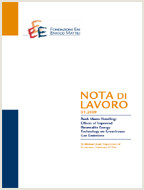Energy Prices, Subsidies and Resource Tax Reform in China

26.08.2014
ZhongXiang Zhang
H23, H71, O13, O53, P2Q41, Q43, Q48, Q53, Q58
Energy Prices, Tiered Prices, Differentiated Tariffs, Subsidies, Coal, Electricity, Natural Gas, Petroleum Products, Resource Taxes, Desulfurization and Denitrification, State-Owned Enterprises, China
Energy: Resources and Markets
Giuseppe Sammarco
The Chinese leadership in November 2013 determined to embark upon a new wave of comprehensive reforms in China. This is clearly reflected by the key decision of the Third Plenum of the 18th Central Committee of Communist Party of China to assign the market a decisive role in allocating resources. To have the market to play that role, getting the energy prices right is crucial because it sends clear signals to both producers and consumers of energy. While the overall trend of China’s energy pricing reform since 1984 has been moving away from the pricing completely set by the central government in the centrally planned economy towards a more market-oriented pricing mechanism, the pace and scale of the reform differ across energy types. This paper discusses the evolution of price reforms for coal, petroleum products, natural gas and electricity in China, provides some analysis of these energy price reforms, and suggests few areas of reforms could take place in order to have the market to play a decisive role in allocating resources and to help China’s transition to a low-carbon economy.
***
Suggested citation: Zhang, Z., (2014), ‘Energy Prices, Subsidies and Resource Tax Reform in China’, Nota di Lavoro 72.2014, Milan, Italy: Fondazione Eni Enrico Mattei.
